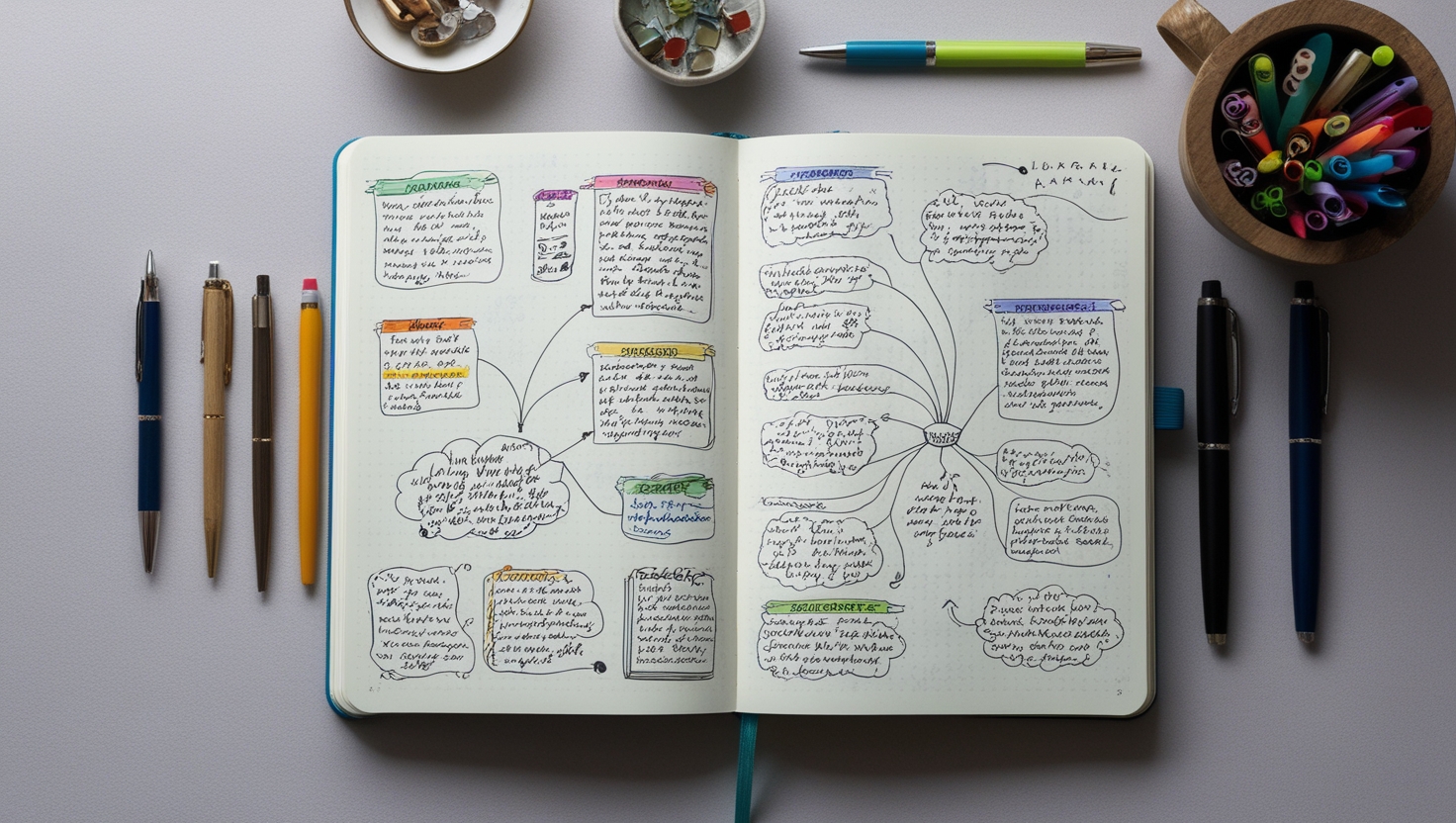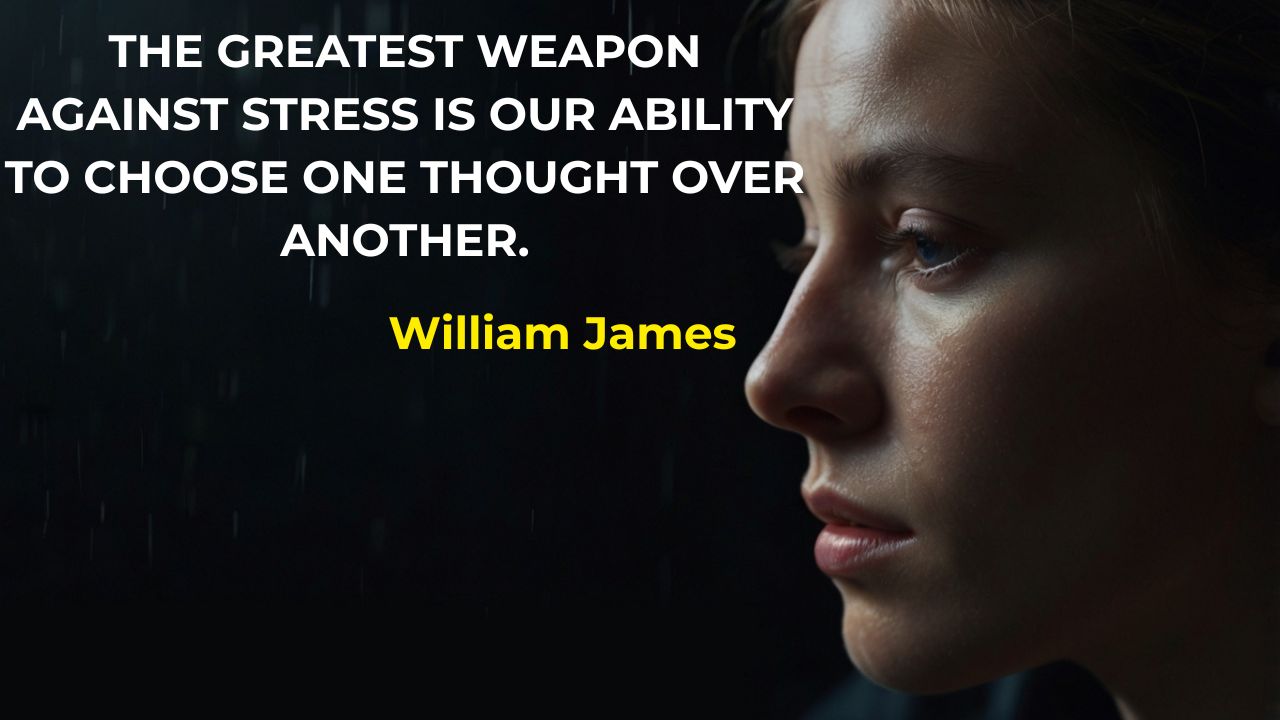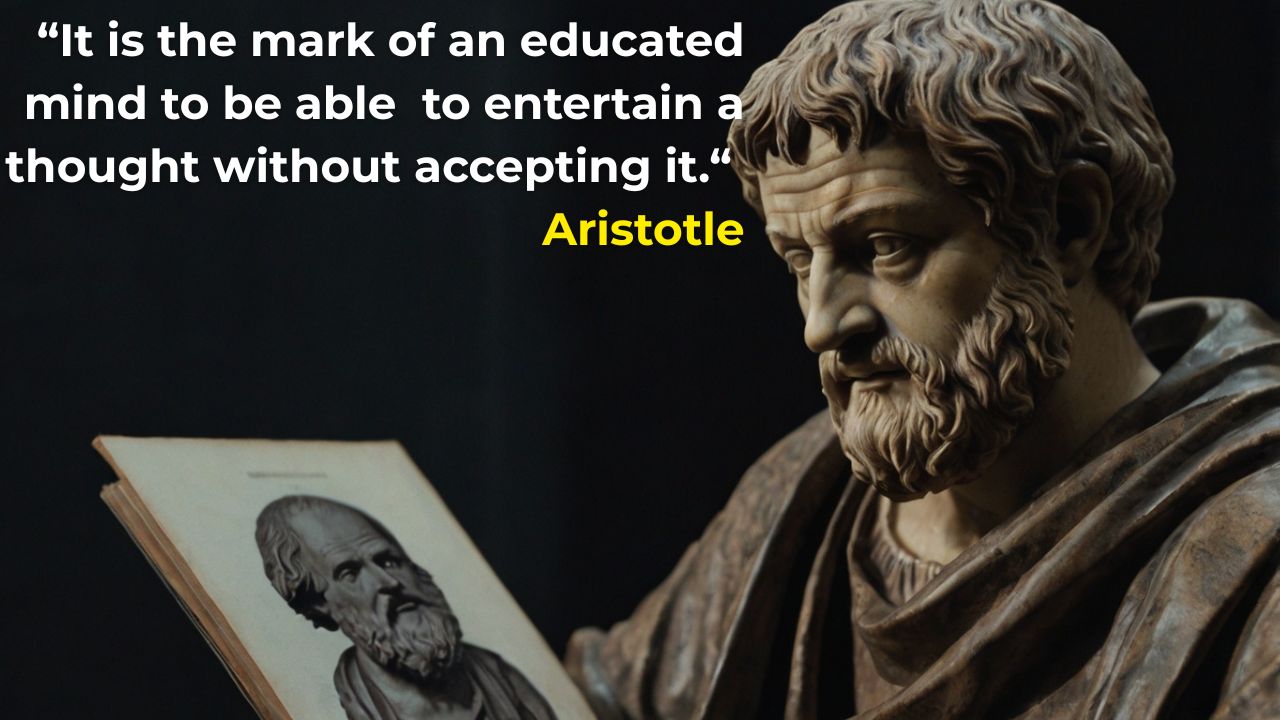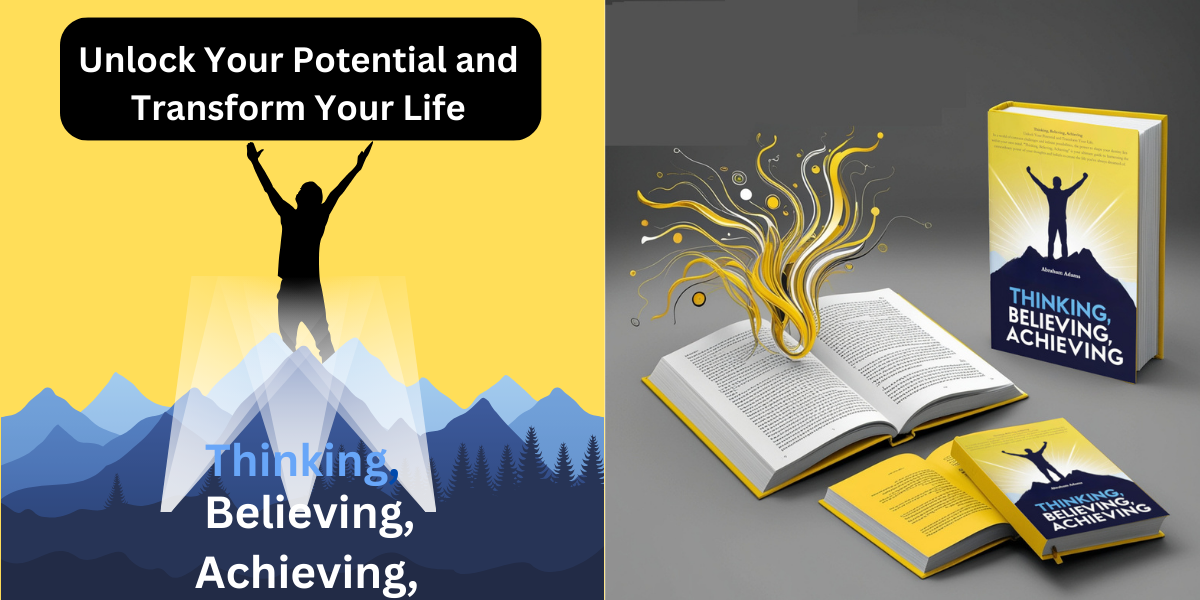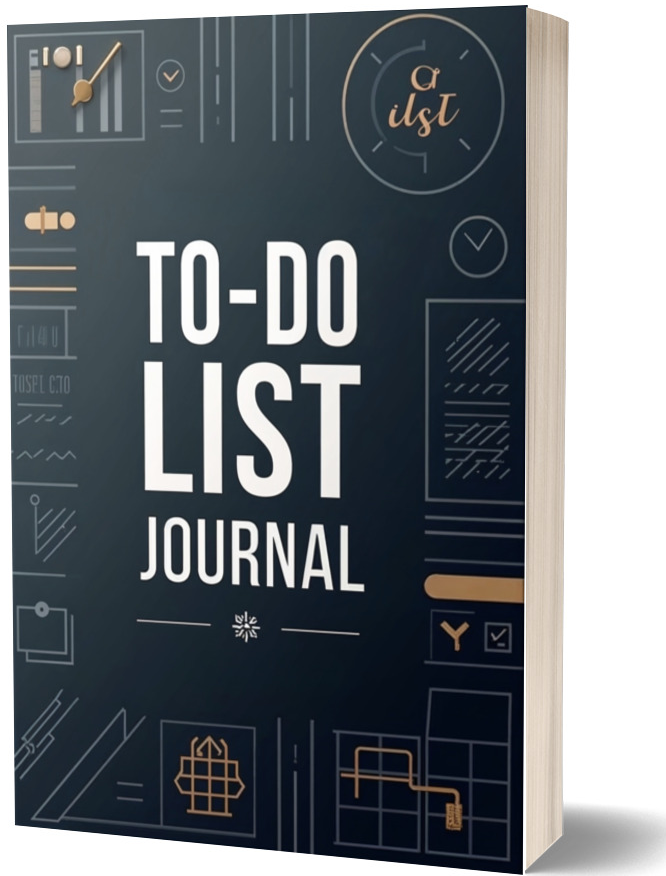Super User
The Art of Self Discipline
The Art of Self Discipline
Self-discipline stands as one of humanity's most powerful tools for personal transformation. It's the invisible force that separates those who merely dream from those who achieve, the quiet strength that turns aspirations into reality. Yet despite its importance, self-discipline remains misunderstood by many who view it as a form of self-punishment rather than self-liberation.
Understanding Self-Discipline
At its core, self-discipline is the ability to control your impulses, emotions, and behaviors in pursuit of long-term goals. It's not about rigid restriction or joyless living, but rather about making conscious choices that align with your deeper values and aspirations. Think of it as the art of delayed gratification—choosing the satisfaction of meaningful progress over the fleeting pleasure of immediate impulses.
Self-discipline manifests in countless ways throughout our daily lives. It's the writer who sits down to work even when inspiration feels distant, the athlete who maintains their training schedule despite fatigue, the student who chooses study time over entertainment, and the individual who speaks kindly even when feeling frustrated. It's the bridge between intention and action, between who we are and who we aspire to become.
The Foundation of Willpower
Willpower operates much like a muscle—it can be strengthened through practice but also becomes fatigued with overuse. Research in psychology has shown that our capacity for self-control fluctuates throughout the day, typically being strongest in the morning and weakening as we make more decisions and resist more temptations.
Understanding this natural rhythm allows us to work with our biology rather than against it. By tackling our most challenging tasks when our willpower reserves are full and creating systems that reduce the need for constant decision-making, we can maximize our self-disciplinary success.
Cultivating Self-Discipline: A Practical Approach
Start Small and Build Momentum
The journey toward greater self-discipline begins with small, manageable commitments. Rather than attempting dramatic lifestyle overhauls, focus on tiny habits that can be easily maintained. Make your bed each morning, drink a glass of water upon waking, or write one sentence in a journal. These micro-commitments create a foundation of success that builds confidence and momentum for larger challenges.
Create Environmental Design
Your environment profoundly influences your behavior, often without conscious awareness. Design your surroundings to support your disciplined choices while minimizing temptations. Keep healthy snacks visible and junk food out of sight, place your workout clothes next to your bed, or use website blockers during focused work periods. When discipline becomes the path of least resistance, maintaining it requires far less effort.
Develop Clear Systems and Routines
Discipline thrives within structure. Establish consistent routines that remove the burden of constant decision-making from your daily life. Create morning rituals that set a positive tone for your day, establish specific times for important activities, and develop checklists for complex tasks. When behaviors become automatic through repetition, they require minimal willpower to maintain.
Practice Mindfulness and Self-Awareness
True self-discipline requires understanding your patterns, triggers, and tendencies. Regular mindfulness practice—whether through meditation, journaling, or simple reflection—helps you recognize the moments when discipline is most challenged. By observing your thoughts and impulses without immediately acting on them, you create space for conscious choice rather than automatic reaction.
Embrace the Power of "No"
Learning to say no to immediate pleasures, distractions, and non-essential commitments is fundamental to self-discipline. This doesn't mean becoming rigid or joyless, but rather being selective about where you invest your time and energy. Every yes to one thing is inherently a no to something else. Disciplined individuals understand this trade-off and make conscious choices aligned with their priorities.
Build Accountability Systems
External accountability can provide crucial support when internal motivation wavers. Share your goals with trusted friends or family members, join groups with similar objectives, or work with a coach or mentor. Public commitment creates additional motivation to follow through, while supportive communities provide encouragement during challenging moments.
Overcoming Common Obstacles
The path to greater self-discipline inevitably includes setbacks and challenges. Perfectionism often sabotages progress by creating an all-or-nothing mentality where minor slip-ups lead to complete abandonment of goals. Instead, view discipline as a practice rather than a destination. Each moment offers a fresh opportunity to make a disciplined choice, regardless of past decisions.
Motivation naturally fluctuates, and disciplined individuals don't rely solely on feeling motivated to take action. They understand that discipline often means doing what needs to be done precisely when you don't feel like doing it. Action can create motivation just as often as motivation creates action.
The Ripple Effects of Discipline
As self-discipline strengthens in one area of life, it naturally extends to others. The person who develops discipline in their exercise routine often finds it easier to maintain discipline in their work habits, relationships, and personal growth. This cross-pollination effect means that every small disciplined action contributes to overall character development.
Self-discipline also enhances decision-making quality by reducing impulsive choices and increasing thoughtful consideration of consequences. It builds resilience by proving to yourself that you can endure discomfort and uncertainty in service of meaningful goals. Perhaps most importantly, it creates authentic self-respect born from the knowledge that you can trust yourself to follow through on commitments.
The Freedom Within Structure
Paradoxically, self-discipline creates freedom rather than restriction. By developing the ability to control impulses and maintain focus, you gain the freedom to pursue meaningful goals without being derailed by momentary distractions. You become free from the regret that comes with undisciplined choices and free to experience the deep satisfaction of progress toward what truly matters to you.
The disciplined life is not about perfection or rigid control, but about conscious choice and intentional living. It's about becoming the author of your own story rather than a passive character swept along by circumstances and impulses.
Conclusion
Self-discipline is indeed an art—requiring patience, practice, and refinement over time. Like any art form, it becomes more natural and beautiful with dedicated practice. The investment in developing self-discipline pays dividends not just in achievement, but in the deep satisfaction of living according to your highest values and aspirations.
Begin where you are, start small, and remember that each disciplined choice is both a destination and a departure point for the next level of growth. In cultivating self-discipline, you're not just building a skill—you're crafting a life of purpose, integrity, and authentic fulfillment.
Think On Paper: Transform Your Mind Through Writing
Introduction: The Hidden Superpower of History's Greatest Minds
What did Leonardo da Vinci, Charles Darwin, and Marie Curie have in common? Beyond their genius, they all shared one crucial habit: they thought on paper.
Their notebooks weren't just records—they were thinking laboratories where breakthrough ideas were born.
In our digital age of endless distractions, this ancient practice has become more powerful than ever. While others struggle with mental overwhelm, those who think on paper gain an unfair advantage: crystal-clear thinking, innovative solutions, and the ability to turn confusion into clarity with nothing more than pen and paper.
Your brain is like a computer with too many browser tabs open. Thoughts bounce around, ideas slip away, and important insights get lost in the mental noise. What if you could clear that clutter and think with laser focus? The solution is simpler than you might imagine: think on paper.
This isn't just writing—it's externalizing your thoughts to see them clearly, connect ideas you've never connected before, and solve problems that seemed impossible. It's the difference between fumbling in a dark room and turning on the lights. In the next few minutes, you'll discover how to transform this simple practice into your secret weapon for better decisions, deeper insights, and a dramatically clearer mind.
Section 1: The Beginner's Foundation (Weeks 1-4)
Why Your Brain Needs Paper
Your working memory can only hold 3-7 pieces of information at once. When you think on paper, you free up that mental space and create a visual map of your thoughts. It's like having a conversation with yourself, but one where you can actually remember what you said five minutes ago.
Week 1-2: The Basic Brain Dump
Start with the simplest exercise: the daily brain dump.
Your First Exercise:
- Set a timer for 10 minutes
- Write continuously about whatever's on your mind
- Don't stop, don't edit, don't worry about grammar
- If you get stuck, write "I'm stuck" until new thoughts emerge
What you're building: The habit of externalizing thoughts without judgment.
Progress Marker: You've succeeded when you can fill a full page without stopping. Track this daily for two weeks.
Week 3-4: The Question Method
Now add structure to your thinking. Start each session with a specific question:
- "What's really bothering me about this situation?"
- "What am I trying to figure out?"
- "What would success look like here?"
Exercise:
- Write your question at the top of the page
- Spend 15 minutes exploring it on paper
- Circle or highlight insights that surprise you
Progress Marker: You're ready to advance when you regularly discover something you didn't know you were thinking.
Beginner Success Metrics:
- Consistency: Writing 5 days per week
- Duration: Comfortable writing for 15 minutes straight
- Discovery: Finding at least one "aha moment" per week
- Clarity: Feeling clearer about problems after writing
Section 2: The Intermediate Explorer (Weeks 5-12)
You've built the foundation. Now let's add power tools to your thinking arsenal.
The Connection Web
Your brain is a pattern-matching machine, but it needs help seeing the patterns. The Connection Web makes invisible relationships visible.
Exercise: The Topic Web
- Write your main topic in the center of the page
- Draw branches to related ideas, memories, or problems
- Connect different branches when you see relationships
- Use different colors for different types of connections
What you're building: The ability to see how seemingly unrelated ideas influence each other.
The Problem Dissection Method
Most problems feel overwhelming because we see them as monolithic. Break them apart.
Exercise: The 5-Layer Dig
- Layer 1: Write the problem as you first think of it
- Layer 2: Ask "What's really the problem here?" Write that answer
- Layer 3: Ask "What's underneath that?" Keep digging
- Layer 4: "What would have to be true for this to not be a problem?"
- Layer 5: "What's one small thing I could do about this today?"
Progress Marker: You're succeeding when problems that once felt impossible start feeling manageable.
The Perspective Shift
Your thoughts are often trapped in one viewpoint. Deliberately shift perspectives on paper.
Exercise: The Three Chairs Write about the same situation from three different perspectives:
- Your Chair: How you see it
- The Other Person's Chair: How someone else involved might see it
- The Observer's Chair: How a wise, neutral observer might see it
Intermediate Success Metrics:
- Problem-solving: Regularly solving problems that previously stumped you
- Pattern Recognition: Noticing connections between different areas of your life
- Emotional Clarity: Understanding your feelings better through writing
- Decision Making: Making decisions faster and with more confidence
Interactive Challenge: Choose one recurring problem in your life. Use each intermediate technique to explore it over one week. Rate your understanding of the problem before and after (1-10 scale).
Section 3: The Advanced Practitioner (Month 3+)
You're no longer just thinking on paper—you're architecting your thoughts. At this level, you become a master of your own mind.
The Systems Thinking Map
Complex challenges require systems thinking. Map the forces, feedback loops, and leverage points.
Exercise: The Influence Ecosystem
- Put your challenge in the center
- Map all the forces that influence it (people, systems, constraints, resources)
- Draw arrows showing how these forces interact
- Identify the high-leverage intervention points
- Design experiments to test your theories
The Time Travel Technique
Think across time horizons to gain perspective and make better long-term decisions.
Exercise: The Three Timelines For any decision or challenge, write from three time perspectives:
- Past Self: What would you tell your past self about this?
- Present Self: What are all your current options and their consequences?
- Future Self: Looking back from 5 years in the future, what matters most?
The Mental Model Mixer
Combine different mental models to gain unique insights.
Exercise: The Model Mashup
- Choose two different mental models (e.g., "First Principles" + "Opportunity Cost")
- Apply both to the same problem simultaneously
- Look for insights that emerge only when using both models together
- Create your own hybrid approach
The Meta-Thinking Session
Think about your thinking. This is where you become your own cognitive coach.
Exercise: The Thinking Audit Weekly, spend 30 minutes analyzing your thinking patterns:
- What types of problems do you avoid thinking about?
- What mental traps do you fall into repeatedly?
- Which thinking techniques work best for different types of challenges?
- How has your thinking changed over the past month?
Advanced Success Metrics:
- Strategic Thinking: Regularly making decisions that pay off months later
- Mental Agility: Switching between different thinking approaches fluidly
- Innovation: Regularly generating novel solutions or insights
- Teaching Others: Able to help others think through their problems
- Meta-Awareness: Conscious of your thinking patterns and able to adjust them
Advanced Challenge: Create your own thinking technique by combining elements from different approaches. Test it for a month and refine it based on results.
Measuring Your Progress: The Think-on-Paper Scorecard
Track your development with this monthly assessment:
Cognitive Metrics (Rate 1-10):
- Clarity: How clear are your thoughts after writing sessions?
- Insight Generation: How often do you discover new perspectives?
- Problem Resolution: How many problems do you actually solve?
- Decision Confidence: How confident do you feel in your decisions?
Behavioral Metrics:
- Consistency: Days per week you think on paper
- Duration: Average length of thinking sessions
- Application: Times per week you use insights in real life
- Teaching: Times per month you help others think through problems
Life Impact Metrics:
- Stress Levels: Has regular thinking on paper reduced your stress?
- Relationship Quality: Are you better at understanding others' perspectives?
- Work Performance: Are you solving work problems more effectively?
- Personal Growth: Are you making progress on long-term goals?
Making It Stick: Your 90-Day Implementation Plan
Days 1-30: Master the basics. Focus on consistency over complexity. Days 31-60: Add intermediate techniques. Experiment with different approaches. Days 61-90: Develop your advanced practice. Create your own methods.
Daily Minimums:
- Beginner: 10 minutes of brain dumping
- Intermediate: 20 minutes of structured thinking
- Advanced: 30 minutes including meta-thinking
Weekly Reviews: Every Sunday, spend 15 minutes reviewing your thinking from the week:
- What problems did you solve?
- What patterns did you notice?
- What do you want to think about next week?
The Compound Effect of Clear Thinking
Thinking on paper isn't just about solving today's problems—it's about upgrading your mind's operating system. Each session builds your capacity for clarity, creativity, and wisdom. A year from now, you'll look back amazed at how much sharper your thinking has become.
The most successful people in every field share this habit: they think on paper. They don't trust their minds to hold everything, and they don't leave their best insights to chance. They externalize their thoughts, examine them, and use them to build better lives.
Your journey starts with a blank page and a simple question: "What am I thinking about right now?"
The page is waiting. Your thoughts are ready. Begin.
Notes & Task List Tracker
Notes and Task List Planner Stay Organized & Achieve More!
Are you looking for a **simple yet effective planner** to keep track of your daily tasks, notes, and deadlines?
The Notes and Task List Planner is designed to help you stay organized, increase productivity, and maintain clarity in both work and personal life.
Why You'll Love This Planner:*
✔ Structured Task Tracking – Easily organize your to-dos with dedicated sections for tasks, categories, deadlines, priorities, and status updates.
✔ Flexible Note-Taking – A designated notes page accompanies each task list, allowing space for ideas, reflections, and additional details.
✔ Easy-to-Use Layout – A clean and intuitive format ensures you can plan efficiently without distractions.
✔ Designed for Success – Whether you're a professional, student, entrepreneur, or someone managing daily responsibilities, this planner helps you take control of your schedule.
✔ Perfect for Daily or Weekly Planning – Use it as a journal, a to-do list, or a long-term goal tracker—tailor it to fit your workflow.
Who Is This Planner For?
📌 Busy Professionals who need a clear system to manage work tasks.
📌 Entrepreneurs & Business Owners looking to keep projects organized.
📌 Students & Teachers who want a structured way to manage assignments and notes.
📌 Anyone who wants to boost their productivity and stay on top of daily priorities!
Product Details: 📖 180+ pages of structured planning and note-taking space
📏 Perfectly sized for portability and convenience
🖊️ Versatile Use – Suitable for personal, professional, and academic planning.
Start each day with clarity and purpose. Get your Notes and Task List Planner today and take charge of your productivity!
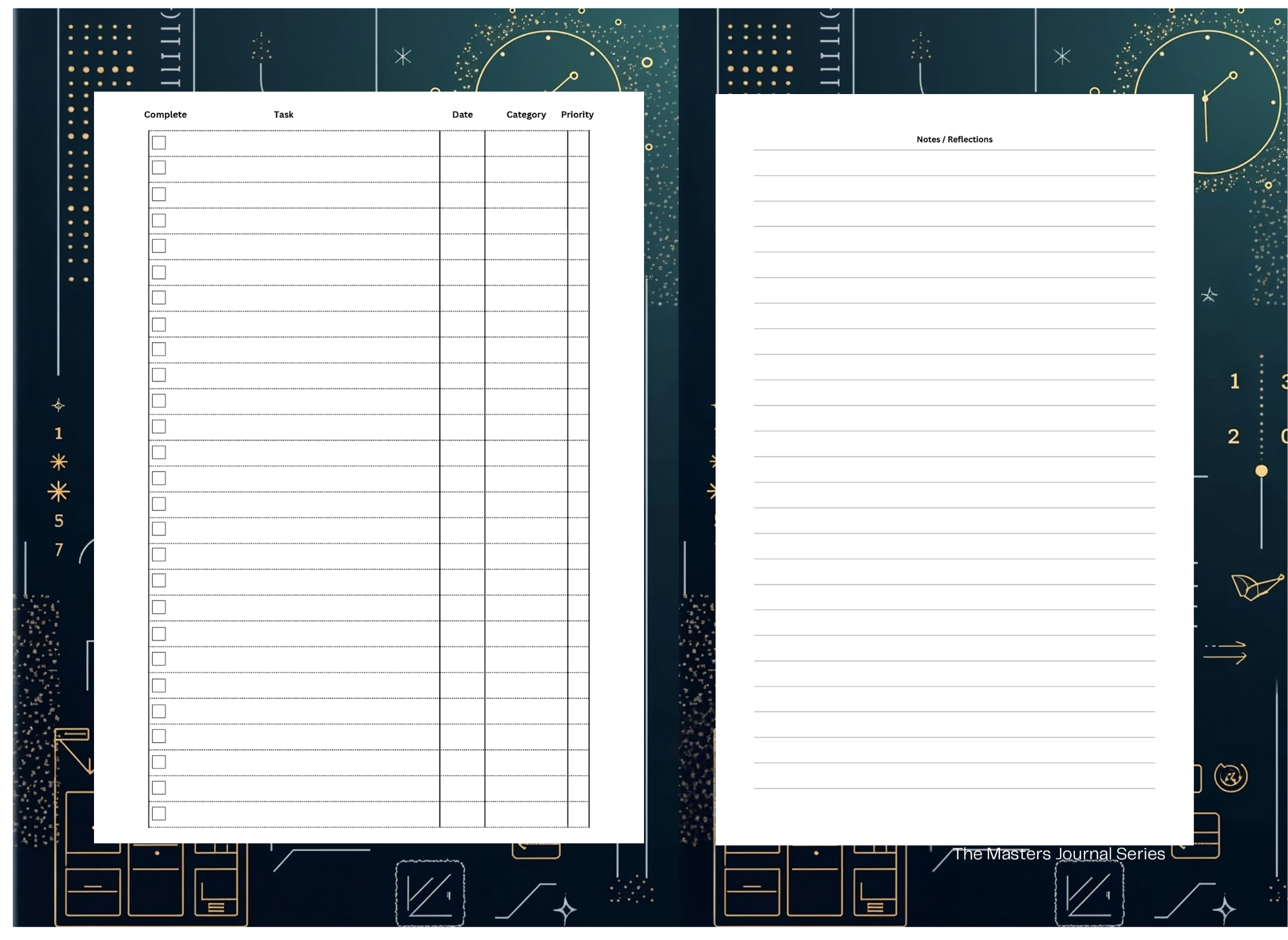
Books Overview
📚 Our Book Collection
Explore our growing library of inspirational books by Abraham Adams. Each title is crafted to guide you through mindset, discipline, and the pursuit of wealth and wisdom.

The Apprentice Millionaire
A foundational guide to wealth creation, combining mindset and money management for aspiring entrepreneurs.
Read More →
The Masters of Thought
Dive into the minds of history's greatest thinkers and learn how to shape your own destiny through disciplined thinking.
Read More →
Thinking, Believing, Achieving
A motivational blueprint for transforming belief into action and achieving the success you were made for.
Read More →htmls
<!DOCTYPE html>
<html lang="en">
<head>
<meta charset="UTF-8">
<meta name="viewport" content="width=device-width, initial-scale=1">
<title>Video Grid</title>
<style>
body {
font-family: Arial, sans-serif;
margin: 10px;
background: #f9f9f9;
}
.video-grid {
display: grid;
grid-template-columns: repeat(auto-fit, minmax(300px, 1fr));
gap: 20px;
}
.video-box {
background: #fff;
padding: 10px;
box-shadow: 0 2px 6px rgba(0,0,0,0.1);
border-radius: 8px;
}
.video-box h3 {
font-size: 16px;
margin-bottom: 10px;
}
.video-box iframe {
width: 100%;
height: 180px;
border: none;
border-radius: 6px;
}
</style>
</head>
<body>
<div class="video-grid">
<div class="video-box">
<h3>1. What You Think About, You Bring About</h3>
<iframe src="https://www.youtube.com/embed/YOUR_VIDEO_ID_1" allowfullscreen></iframe>
</div>
<div class="video-box">
<h3>2. Your Thoughts Are Seeds—What Are You Growing?</h3>
<iframe src="https://www.youtube.com/embed/YOUR_VIDEO_ID_2" allowfullscreen></iframe>
</div>
<div class="video-box">
<h3>3. Think It, Feel It, Attract It</h3>
<iframe src="https://www.youtube.com/embed/YOUR_VIDEO_ID_3" allowfullscreen></iframe>
</div>
<div class="video-box">
<h3>4. Your Mind Is a Magnet</h3>
<iframe src="https://www.youtube.com/embed/YOUR_VIDEO_ID_4" allowfullscreen></iframe>
</div>
<div class="video-box">
<h3>5. Rewire Your Thoughts, Rebuild Your Life</h3>
<iframe src="https://www.youtube.com/embed/YOUR_VIDEO_ID_5" allowfullscreen></iframe>
</div>
<div class="video-box">
<h3>6. Master the Mind, Master Your World</h3>
<iframe src="https://www.youtube.com/embed/YOUR_VIDEO_ID_6" allowfullscreen></iframe>
</div>
<div class="video-box">
<h3>7. Manifestation Begins in the Mind</h3>
<iframe src="https://www.youtube.com/embed/YOUR_VIDEO_ID_7" allowfullscreen></iframe>
</div>
<div class="video-box">
<h3>8. Thoughts Are Energy</h3>
<iframe src="https://www.youtube.com/embed/YOUR_VIDEO_ID_8" allowfullscreen></iframe>
</div>
<div class="video-box">
<h3>9. Don’t Just Think—Think With Intention</h3>
<iframe src="https://www.youtube.com/embed/YOUR_VIDEO_ID_9" allowfullscreen></iframe>
</div>
<div class="video-box">
<h3>10. You Become What You Think About Most</h3>
<iframe src="https://www.youtube.com/embed/YOUR_VIDEO_ID_10" allowfullscreen></iframe>
</div>
<div class="video-box">
<h3>11. Train Your Mind to Attract What You Want</h3>
<iframe src="https://www.youtube.com/embed/YOUR_VIDEO_ID_11" allowfullscreen></iframe>
</div>
<div class="video-box">
<h3>12. The Law of Mental Attraction</h3>
<iframe src="https://www.youtube.com/embed/YOUR_VIDEO_ID_12" allowfullscreen></iframe>
</div>
</div>
</body>
</html>
The Masters Bullet Journals
The Masters Series Bullet Journal
**Bullet Journal with Index**
Designed for professionals, creatives, and thinkers, this **Bullet Journal** offers a streamlined way to capture and organize your thoughts, tasks, and ideas. At the beginning of the journal, you'll find a **dedicated Index section** to help you track key entries with ease. Each page is **numbered**, allowing you to log important notes, brainstorming sessions, project plans, or daily reflections for quick reference.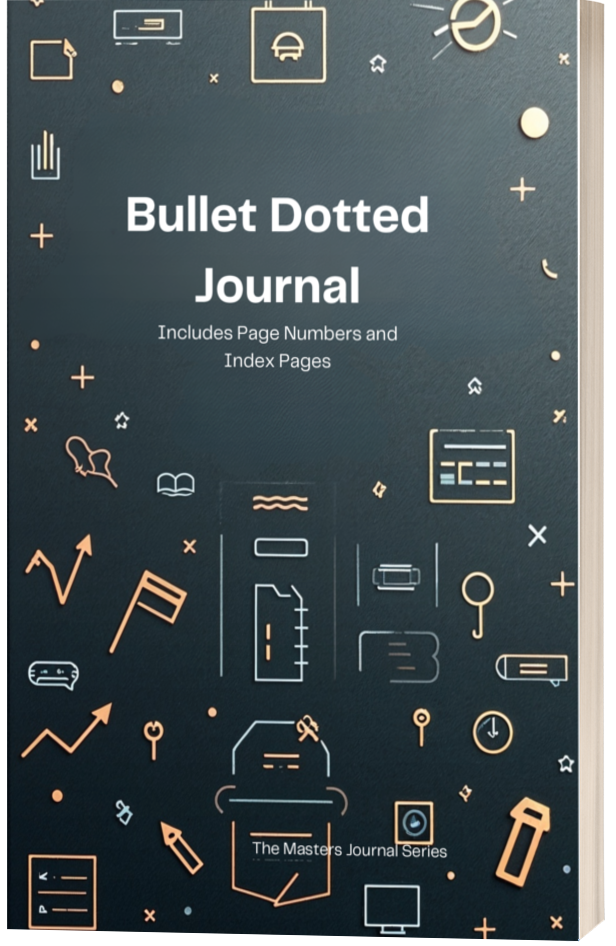
With a clean, structured layout and **bullet-style formatting**, this journal provides the flexibility to adapt to your workflow—whether for goal setting, meeting notes, or creative planning.
**Stay organized. Stay productive. Turn ideas into action.**

Index Ruled Journal
The Masters Series Ruled Index Journal
This journal is designed for professionals who value organization and efficiency in tracking their thoughts, ideas, and insights. The first **10 pages** serve as an **index**, allowing you to log key entries for easy reference. Each blank page is **numbered**, making it simple to locate specific notes.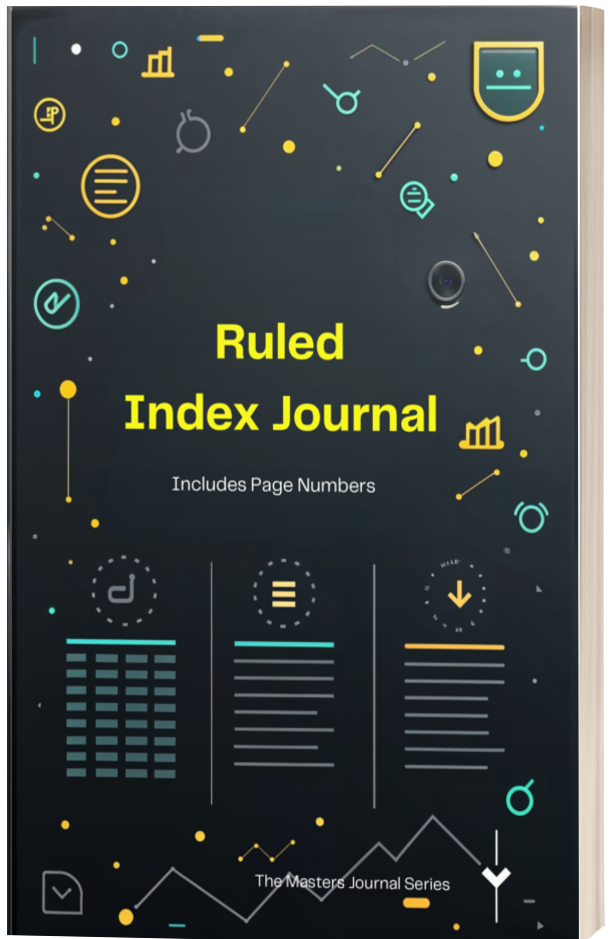
To use this section, just record the **page number** and a **brief description** of your entry. Whether you're capturing strategic ideas, important reflections, or action plans, this structured approach ensures quick and effortless access to your most valuable notes.
**Stay organized. Stay focused. Elevate your thinking.**
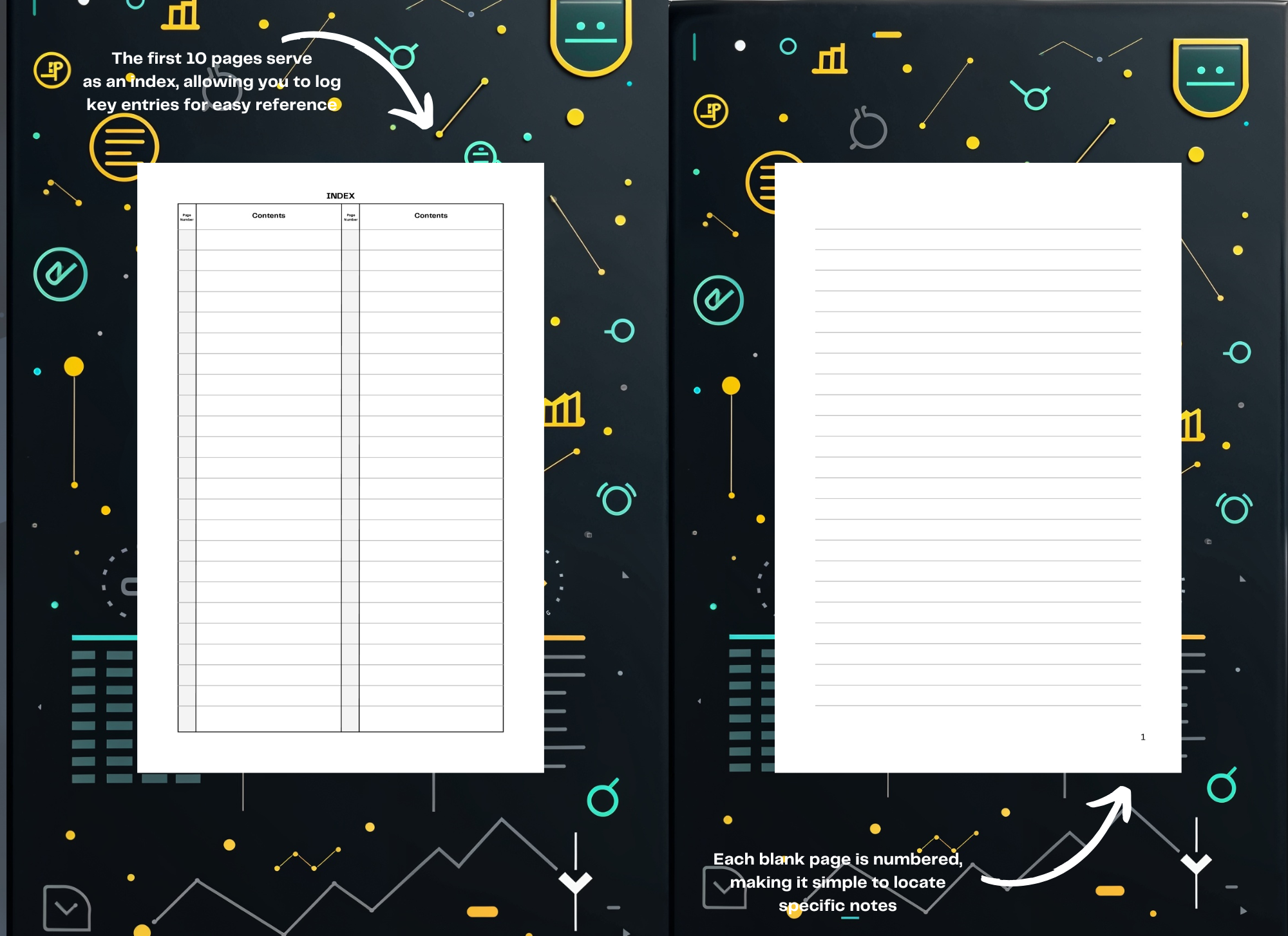
Building Persistence: Practical Strategies to Strengthen Your Willpower
Building Persistence: Practical Strategies to Strengthen Your Willpower
Persistence is the backbone of success. It’s the quality that keeps you going when challenges arise, when motivation fades, and when you’re faced with obstacles that make you want to quit. Whether you’re trying to achieve personal goals, pursue a career, or build healthy habits, persistence is what will see you through to the finish line. However, persistence isn’t something you’re born with; it’s a skill that can be developed and strengthened over time.
In this article, we’ll explore practical strategies to help you build persistence and develop the willpower necessary to push through adversity and achieve long-term goals.
Why is Persistence Important?
Persistence is about continuing to take action, even when the results aren’t immediate or when things get tough. It’s essential for:
- **Achieving Long-Term Goals**: Success rarely happens overnight. Persistence helps you stay on track, even when progress feels slow.
- **Building Resilience**: Each time you push through challenges, you build mental and emotional resilience, preparing you for future obstacles.
- **Maintaining Motivation**: Persistence fuels your motivation by reinforcing the habit of continuing, even when you don’t feel like it.
However, building persistence requires more than just willpower; it requires a strategic approach. Let’s look at some effective ways to strengthen your persistence muscle.
1. **Start Small: Set Achievable Goals**
The journey to persistence doesn’t begin with tackling huge, overwhelming tasks. It begins with small, manageable steps that create a foundation for success. Starting small allows you to build confidence and develop the habit of taking consistent action.
For example, if your goal is to run a marathon, don’t start by committing to running 26 miles right away. Instead, start with short distances, gradually increasing your mileage as you build stamina. Each small win, no matter how minor, will motivate you to keep going.
By starting with small tasks, you create a series of successful experiences that build momentum. Over time, these small wins will accumulate, and you’ll find that the journey becomes easier as persistence becomes a part of your routine.
2. **Create a Routine**
Routines are powerful because they remove decision-making from the equation. When you’re working toward a goal, the more you can make your desired actions automatic, the easier it becomes to persist. A routine helps you stay consistent, which is essential for developing persistence.
For instance, if you want to write a book, set a specific time each day to write, even if it’s just for 15-20 minutes. Having a daily writing routine makes it easier to stay committed to your goal, even when motivation is low.
Consistency is key. By establishing routines that align with your goals, you’re laying the groundwork for persistence. Over time, as the routine becomes ingrained, you’ll find that you’re naturally taking action toward your goals, without needing constant motivation.
3. **Embrace the Power of “Why”**
Persistence is much easier when you have a strong sense of **why** behind your actions. Knowing why you’re pursuing a goal gives you clarity and serves as motivation when things get tough. When you feel like giving up, returning to your “why” can reignite your drive and help you push through.
Ask yourself:
- **Why do I want to achieve this goal?**
- **What will success look like for me?**
- **How will this achievement improve my life or the lives of others?**
The stronger and clearer your “why,” the more persistence you’ll have to see things through. For instance, if you’re trying to lose weight, your “why” might be to improve your health and feel more energized. Keeping that deeper purpose in mind helps you stay motivated, especially when temptations arise or progress feels slow.
4. **Focus on Progress, Not Perfection**
One of the biggest hurdles to persistence is the pressure of perfectionism. It’s easy to get discouraged when you feel like you’re not doing things perfectly or making as much progress as you hoped. However, focusing on **progress** instead of perfection helps you stay motivated and prevents burnout.
It’s important to celebrate small milestones along the way. For example, if you’re learning a new skill, don’t fixate on the fact that you’re not an expert yet. Instead, acknowledge the improvement you’ve made and keep going. Over time, those small improvements will add up to big success.
Remember: persistence isn’t about being perfect—it’s about consistently showing up, even when the results aren’t immediate.
5. **Visualize Your Success**
Visualization is a powerful tool that can help reinforce your persistence. Imagine yourself succeeding, whether it’s finishing a marathon, landing your dream job, or achieving any other goal. The more vividly you can picture yourself achieving your goals, the more motivated you’ll be to keep working toward them.
Visualization strengthens your emotional connection to the goal, making it more real and tangible. When challenges arise, those vivid images of success can serve as a reminder of why it’s worth pushing through.
Take a few moments each day to close your eyes and visualize the feeling of accomplishment you’ll experience when you reach your goal. This mental rehearsal can fuel your persistence by reinforcing your belief in yourself.
6. **Learn to Overcome Setbacks**
Setbacks are inevitable, but how you respond to them is crucial. The most persistent people are those who don’t give up when they encounter obstacles—they learn from them and keep going.
When you face a setback, instead of getting discouraged, use it as an opportunity to reflect and adjust your approach. Ask yourself:
- **What went wrong?**
- **What can I do differently next time?**
- **How can I learn from this experience?**
Each time you bounce back from a setback, you strengthen your resilience and persistence. Remember, setbacks are just temporary detours, not permanent roadblocks.
7. **Build a Support System**
Persistence is easier when you have people around you who encourage and support you. Whether it’s a friend, family member, or mentor, a support system can provide the motivation and accountability you need to stay on track.
When you’re struggling with persistence, lean on your support system for encouragement and perspective. They can remind you of your strengths, cheer you on when progress feels slow, and help you stay motivated during tough times.
Conclusion: Persistence is a Muscle You Can Strengthen
Persistence isn’t just about sheer willpower—it’s a skill that can be developed and strengthened over time. By setting small goals, creating routines, embracing your “why,” and focusing on progress rather than perfection, you can build the persistence necessary to achieve your long-term goals. Remember, it’s the small, consistent actions that lead to big results.
Persistence isn’t about never failing—it’s about getting back up and continuing to move forward, no matter what challenges arise. Keep practicing, stay committed, and with time, you’ll find that persistence becomes second nature.
Persistence vs Self-Sabotage
Persistence vs. Self-Sabotage: How to Stop Undermining Your Goals
We all have goals and dreams, whether it’s advancing in our career, improving our health, or achieving personal milestones. But sometimes, despite our best intentions, we find ourselves stuck. It’s as if something is holding us back, and we can’t seem to move forward, no matter how hard we try. In many cases, that “something” is self-sabotage.
Self-sabotage is the act of actively or unconsciously preventing yourself from reaching your goals. It can manifest in different ways: procrastination, negative self-talk, making excuses, or even engaging in behaviors that undermine your success. Ironically, these behaviors are often the result of the fear of failure or the belief that you don’t deserve to succeed.
So, how does persistence come into play when it comes to self-sabotage? Persistence is the opposite of self-sabotage. It’s the determination to keep moving forward, despite setbacks and obstacles. In this article, we will explore how self-sabotage can prevent us from reaching our goals, how persistence can help us break free from these patterns, and practical strategies to overcome self-sabotage.
What is Self-Sabotage?
Self-sabotage is any action or thought pattern that interferes with your ability to achieve your goals. It might not always be obvious—it can manifest in subtle ways, such as putting off important tasks, doubting your abilities, or choosing temporary comfort over long-term progress.
Here are some common forms of self-sabotage:
• Procrastination: Putting things off, even when you know they are important, is a classic form of self-sabotage.
• Negative Self-Talk: Telling yourself you’re not good enough, or that you’ll never succeed, creates a mental barrier that keeps you from taking action.
• Avoiding Responsibility: Making excuses or avoiding tasks that require effort can prevent you from making progress.
• Fear of Failure: Self-sabotage often occurs when we fear the consequences of failure so much that we avoid taking action at all.
At the core of self-sabotage is a fear—whether it’s fear of failure, fear of success, or fear of judgment. These fears can cause us to doubt our abilities or convince ourselves that we don’t deserve to achieve our goals. The result? We hold ourselves back.
How Persistence Helps You Overcome Self-Sabotage
Persistence is about continuing to pursue your goals, even in the face of difficulties. It involves cultivating the strength to move forward, even when you’re tempted to quit. When it comes to overcoming self-sabotage, persistence is essential for breaking free from those limiting patterns and behaviors.
1. Persistence Keeps You Moving Forward Despite Setbacks
No one is immune to challenges and setbacks. But persistent individuals don’t allow setbacks to stop them. Instead of giving in to self-doubt or fear, they view obstacles as opportunities to learn and grow. When self-sabotage arises—whether in the form of procrastination or negative thoughts—persistence reminds you that progress is more important than perfection. It encourages you to keep taking action, even if the path isn’t perfect.
2. Persistence Builds Confidence and Momentum
When you persist in the face of challenges, you gain confidence in your ability to overcome obstacles. Each time you push through a moment of doubt or fear, you build mental resilience and grow stronger. This confidence can help you break free from the grip of self-sabotage because you begin to see that you are capable of achieving your goals. Additionally, persistence helps build momentum. Small, consistent actions add up over time, and the more you keep going, the easier it becomes to stay on track.
3. Persistence Helps You Manage Fear
Fear is a common root of self-sabotage, but persistence can help you confront and manage that fear. When you continue working toward your goals despite feeling scared or unsure, you prove to yourself that you don’t have to let fear control your actions. Over time, the more you persist, the less power fear will have over you. Rather than letting fear stop you, persistence allows you to move forward despite it.
4. Persistence Cultivates Resilience
Resilience is the ability to recover from setbacks and keep going. Persistence helps you develop resilience because it encourages you to keep working, even when things don’t go according to plan. The more you practice persistence, the better you become at bouncing back from challenges. Instead of falling into the trap of self-sabotage when things get tough, resilience keeps you on track toward achieving your goals.
Practical Tips to Break Free from Self-Sabotage and Embrace Persistence
If you find yourself stuck in patterns of self-sabotage, there are steps you can take to build persistence and get back on track. Here are some practical strategies:
1. Identify Your Self-Sabotaging Behaviors
The first step in breaking free from self-sabotage is becoming aware of the ways you hold yourself back. Whether it’s procrastination, negative self-talk, or avoidance, identifying these behaviors is the first step to overcoming them. Keep a journal of your actions and thoughts to recognize when you’re engaging in self-sabotage.
2. Set Small, Achievable Goals
Breaking your larger goals into smaller, more manageable tasks makes it easier to stay focused and motivated. Achieving small milestones builds momentum and gives you a sense of accomplishment, which can help you push past self-sabotaging behaviors.
3. Challenge Negative Thoughts
Negative self-talk is one of the most powerful forms of self-sabotage. When you catch yourself thinking, “I’m not good enough” or “I’ll never succeed,” challenge those thoughts. Replace them with positive affirmations like “I am capable,” or “I’ve faced challenges before, and I can overcome this one too.” Persistence requires a positive, growth-oriented mindset.
4. Create Accountability
When we’re left to our own devices, it’s easy to fall into patterns of self-sabotage. But having someone to hold you accountable—whether a friend, family member, or mentor—can make all the difference. Share your goals and progress with someone who can encourage you and help you stay on track.
5. Develop Healthy Habits
Consistent habits are the foundation of persistence. Establish routines that support your goals and well-being. Whether it’s setting aside time for focused work, exercising regularly, or practicing mindfulness, healthy habits create structure and reduce the chance of falling into self-sabotage.
6. Practice Self-Compassion
Self-sabotage often stems from negative emotions like guilt or shame. Instead of being hard on yourself when you slip up, practice self-compassion. Understand that setbacks are a natural part of the process. Be kind to yourself, learn from mistakes, and keep moving forward with determination.
Conclusion: Persistence is the Key to Achieving Your Goals
Self-sabotage can be a frustrating obstacle, but persistence is the antidote. By cultivating persistence, you build the strength to push through setbacks, face fears, and continue making progress toward your goals. Instead of allowing self-sabotage to hold you back, you can use persistence as a tool to overcome obstacles and stay focused on the bigger picture.
Remember, success isn’t about avoiding mistakes—it’s about learning from them and continuing to take action, no matter the setbacks. With persistence, you can break free from self-sabotage, build resilience, and achieve the goals that matter most to you. Keep going, even when it’s tough, because persistence will always be the key to unlocking your potential.
Persistence vs Perfectionism
Persistence vs. Perfectionism: When to Push Through and When to Let Go
We’ve all been there: a project you’ve been working on for what feels like forever, but you just can’t bring yourself to finish it. Maybe you’re stuck in the details, trying to make everything perfect, or you’re too afraid of making a mistake to move forward. The truth is, this kind of behavior can actually hold you back from reaching your goals. In these moments, it’s important to recognize the difference between persistence and perfectionism—and understand when to keep going and when to let go.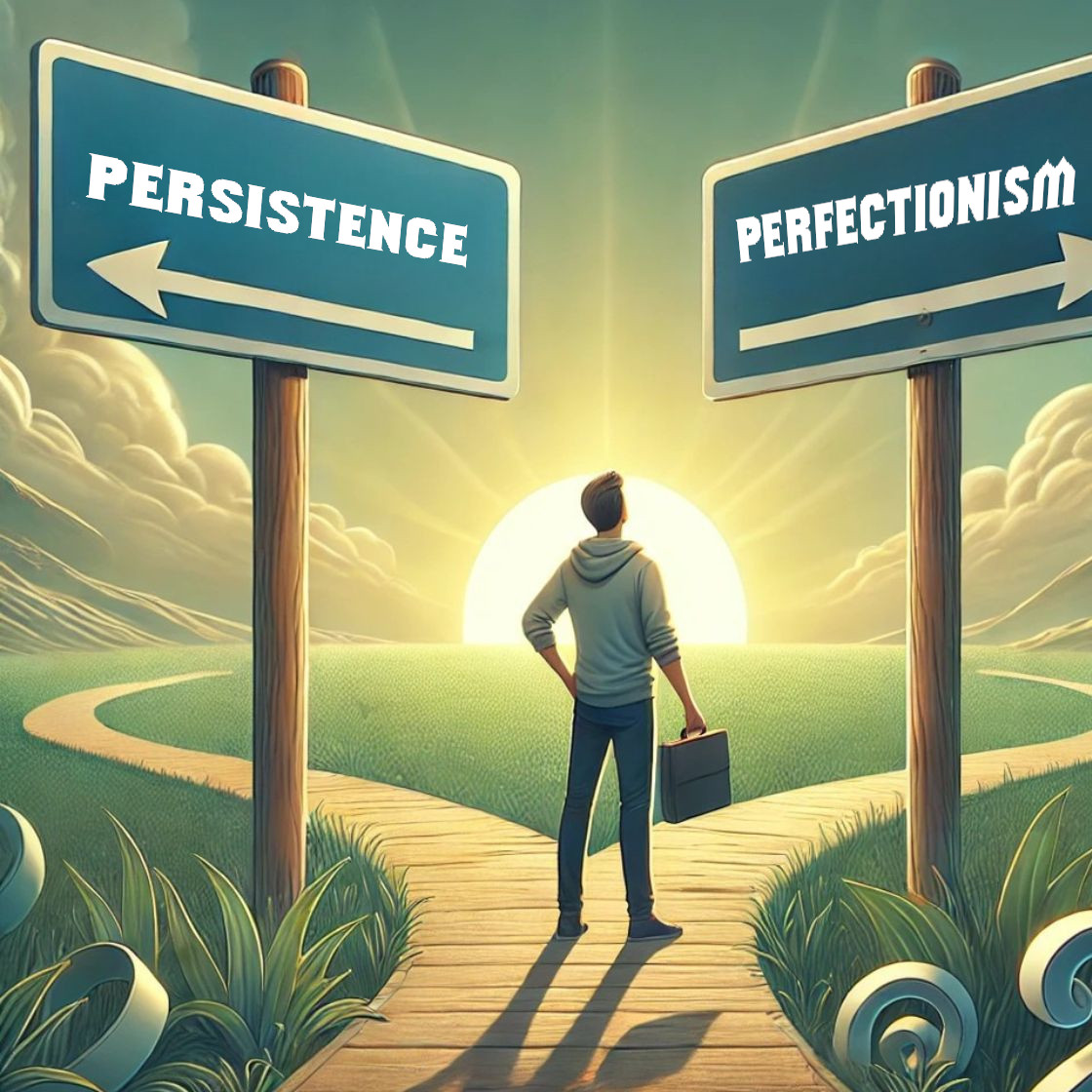
What’s the Difference Between Persistence and Perfectionism?
At first glance, persistence and perfectionism may seem similar. Both involve putting in effort and striving for success. However, the key difference lies in their focus and impact on your progress.
- **Persistence** is the ability to keep going despite challenges, setbacks, or difficulties. It’s about continuing to put in effort toward a goal, even if things don’t go perfectly. When you’re persistent, you focus on progress, not perfection. You’re okay with the bumps along the way and see them as opportunities to learn and improve.
- **Perfectionism**, on the other hand, is the need for everything to be flawless. Perfectionists often set unrealistically high standards for themselves and may refuse to finish a project until it meets those standards. This can lead to procrastination or, worse, never finishing the task at all because it’s “not good enough.” Perfectionism can become a barrier, stopping you from moving forward because you’re too focused on making things perfect.
Why Does Perfectionism Get in the Way?
Perfectionism can be paralyzing. It often stems from fear—fear of failure, fear of criticism, or even fear of not being “good enough.” Perfectionists tend to fixate on small details, constantly tweaking and adjusting, which keeps them from completing the task at hand. In their quest to make everything perfect, they lose sight of the bigger picture.
Here’s where the problem lies: perfectionism can actually keep you from making progress. If you’re constantly chasing perfection, you might never actually finish anything. It can also lead to feelings of frustration, self-doubt, and burnout, which only makes it harder to keep going.
When to Push Through: The Power of Persistence
In contrast, persistence helps you move past the discomfort of imperfection. If you’re working on a goal and things aren’t going as planned, persistence allows you to keep going despite the bumps along the way. It’s about progress, not perfection.
For example, let’s say you’re trying to start a new exercise routine. If you’re a perfectionist, you might hesitate to start because you fear you won’t be able to do it “perfectly.” You might overthink what kind of exercises to do, how to track your progress, or whether you’ll stick to the routine. This kind of thinking can stop you before you even begin.
But persistence tells you to just start, even if you’re not sure about every little detail. You might not get every workout right, but if you keep showing up, you’ll improve over time. It’s the act of continuing despite the imperfections that builds momentum and eventually leads to success.
When to Let Go: Knowing When Perfectionism Is Holding You Back
While persistence is key to making progress, there are times when perfectionism needs to be released. If you find yourself stuck in the pursuit of perfection, unable to finish a project or move forward with your goals, it’s important to step back and ask yourself: **Is striving for perfection helping me, or is it actually keeping me stuck?**
Here are a few signs that perfectionism might be holding you back:
- **You’re procrastinating**: Perfectionists often delay starting or finishing tasks because they’re worried it won’t be good enough. If you’re putting something off because you’re not sure how to do it perfectly, it’s time to let go of that mindset.
- **You’re stuck in the details**: If you’re endlessly tweaking something that doesn’t need to be perfect, like adjusting the wording of an email or redoing a presentation slide for the tenth time, you’re likely letting perfectionism stop you from moving forward.
- **You’re avoiding feedback**: Perfectionists often fear criticism because they feel it reflects their worth. But feedback is a tool for improvement, not judgment. If you’re avoiding feedback because you’re afraid your work isn’t perfect, you’re missing out on valuable opportunities to grow.
How to Find the Balance Between Persistence and Perfectionism
It’s important to find a healthy balance between persistence and perfectionism. Here are some practical tips to help you navigate this balance:
1. **Focus on the Big Picture**
When working toward a long-term goal, remind yourself that the journey is just as important as the destination. Small imperfections along the way are a natural part of the process. Focus on progress, not perfection.
2. **Set Realistic Expectations**
Instead of aiming for perfection, set achievable goals. Break larger tasks into smaller steps and celebrate progress along the way. Remember, perfection isn’t the goal—completion and learning are.
3. **Practice Self-Compassion**
Be kind to yourself when things don’t go as planned. Mistakes are opportunities for growth. When you make a mistake, don’t dwell on it. Reflect on what you can learn, adjust your approach, and keep moving forward.
4. **Know When to Let Go**
Recognize when perfectionism is preventing you from completing a task. If you’ve reached a point where additional adjustments won’t make a meaningful difference, it’s time to move forward. Done is better than perfect.
5. **Seek Feedback**
Don’t be afraid to share your work before it’s “perfect.” Feedback from others can help you see things from a new perspective and improve your work in ways you might not have thought of. It also helps you get out of the perfectionism trap and move forward.
Conclusion: Persistence Is the Key to Growth
The key to achieving long-term success lies not in perfection, but in persistence. While striving for excellence is important, it’s essential to understand when perfectionism is holding you back from making meaningful progress. By learning to balance persistence with a healthy attitude toward imperfection, you can keep moving forward, accomplish your goals, and grow along the way. Remember, **done is better than perfect**, and every step, no matter how imperfect, gets you closer to your ultimate goal.
- Audio Articles
- Audio Articles 1
- Audio Articles 2
- Audio Articles 3
- Audio Articles 4

7 Daily Disciplines That Transform Your Life
The power to act with intention, to align your actions with your values, and to move steadily toward a life of purpose—even on days you don't feel like it.
Read Full Article
How to Build Unbreakable Discipline
Discipline is built—habit by habit, choice by choice, day by day. And the most powerful kind? The kind that doesn’t crack under pressure. The kind that becomes part of who you are.
Read Full Article
Why Motivation Fails And Discipline Wins Every Time
We all love the feeling of motivation—that surge of energy, that rush of inspiration that makes everything seem possible. But here’s the problem: motivation is unreliable. It’s emotional. It comes and goes. And if your goals rely on you “feeling like it,” you’re already in trouble.
Read Full Article
Discipline Over Desire
Desire is loud. It burns bright, talks fast, and loves to dream. But desire alone doesn't achieve much. Every person has desires. Very few have the discipline to bring them to life.
Read Full Article
The Science of Sticking
If you've ever tried to build a new habit, you've probably heard that it takes 21 days. This number gets thrown around so often that it feels like scientific fact.
Read Full Article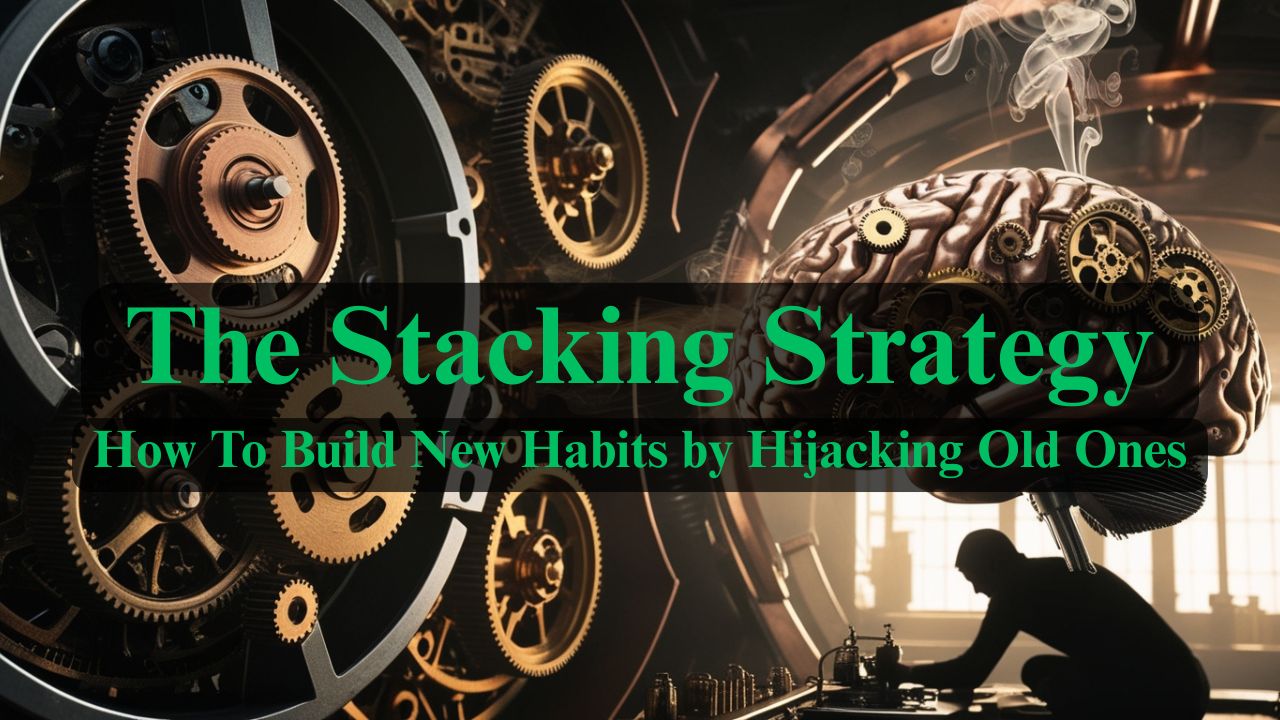
The Stacking Strategy
What if I told you that the habits you already have—even the ones you consider "bad"—could become the secret weapons for building the habits you want?
Read Full Article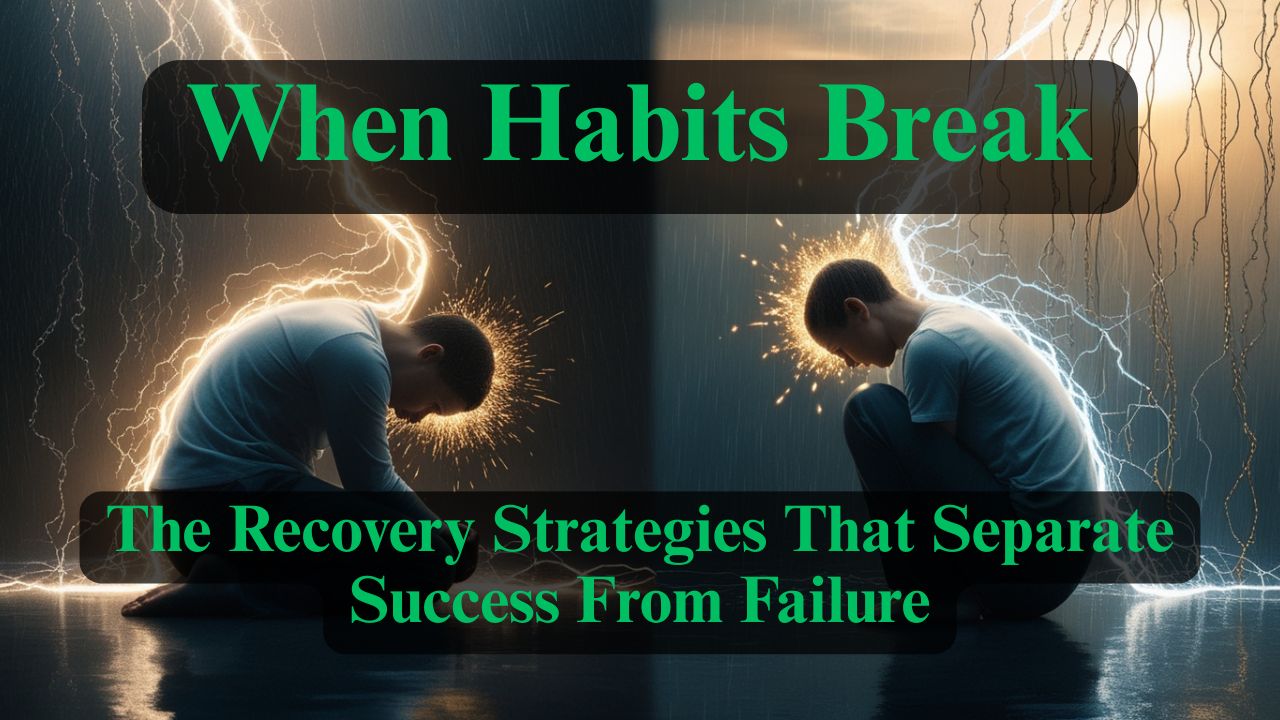
When Habits Fail - The Recovery Strategies That Separate Success From Failure
Here's what nobody tells you about building habits: you will fail. You'll miss days. You'll fall off track. You'll have weeks where everything falls apart.
Read Full Article
The Ultimate System - Designing a Life Where Good Habits Are Inevitable
You've learned to recognize habits, understand their formation timeline, stack them strategically, and recover from setbacks.
Read Full Article

